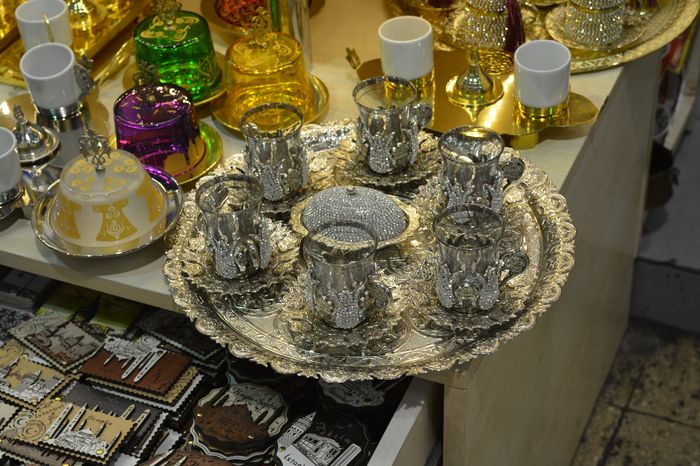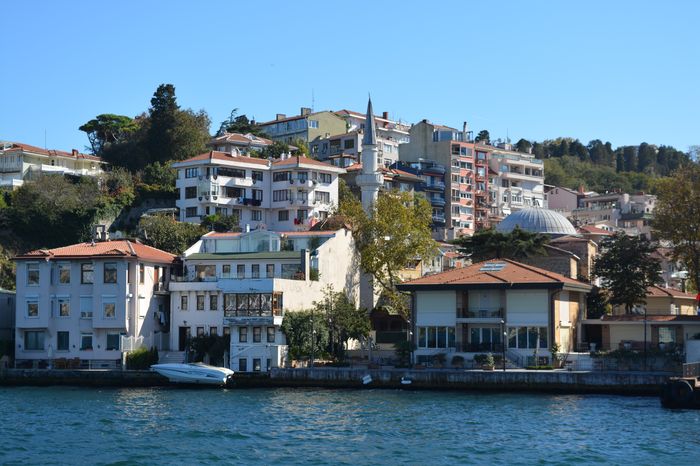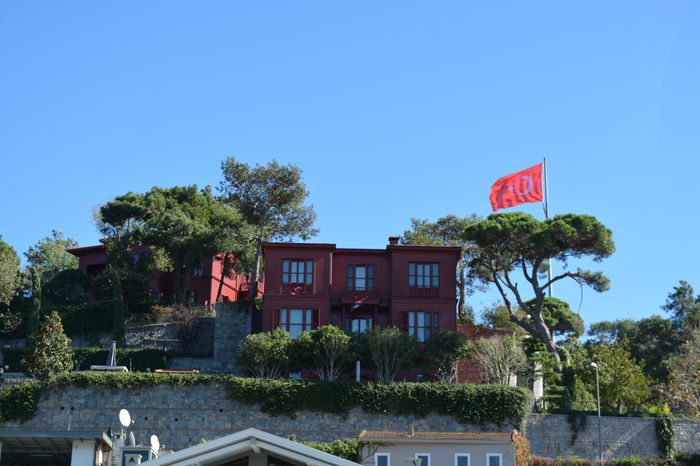A type appearing more frequently is the domical church plan or the Greek-cross plan. The Koimesis, or Dormitio, in Nicaea (ninth century) has a clear basilica plan. This is also true of the church of the Holy Mother of God (Hagia Theotokos) at Constantinople, dating from the tenth century, and of the churches of Mt. Athos.
The church at Skripu in Boeotia, of the same period, has indeed three naves each ending in an apse, but the dome crowns the middle of the building as in the Greek- cross type. The exteriors of these churches, which are usually rather small, are treated with greater care and are artistically elaborated with alternations of stone and brick, smaller domes over the vestibules, a decidedly richer system of domes, and the elevation of these domes by means of drums.
The interiors are decorated most gorgeously. It seems that they could not do enough in this respect. This can still be seen in the church of St. Luke in Phocis, at Daphni, in the Nea Moni at Chio, and others. In this period the perfected art of the capital becomes the model for the empire as well as for regions beyond its borders: Syria, Armenia, Russia, Venice, Middle and Southern Italy, and Sicily. For the West, it is only necessary to mention the church of St. Mark at Venice (978-1096).
After its occupation by the Crusaders (1204), Constantinople partly lost its character and at the same time the far-reaching influence of its intercourse with Western nations. There still remained four centres of Byzantine art: the capital itself, Mt. Athos, Hellas, and Trebizond.
Model of the church of the monastery of Laura
The architecture of Mt. Athos presents the most faithful reflection of the Byzantine style. The model of the church of the monastery of Laura, belonging to the previous period, is more or less faithfully reproduced. A dome, supported on four sides by barrel vaults, stands directly over the middle of the transept, which is terminated at either end by a round apse.
A narthex, or rather two lead into the lengthened main hall. The real architectural ornaments are forced into the background by the frescoes which take the place of the costly mosaics and which practically cover all available wall surface. The architecture of this period remained stationary. It continued unchanged in the countries of the Greek Rite after the fall of Constantinople (1453).
Read More about essentially Oriental character of Byzantine architecture








